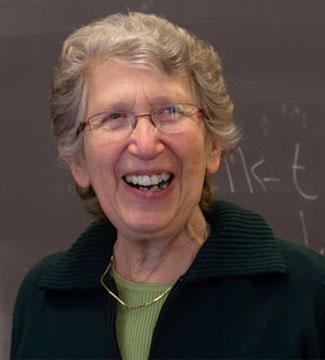PROVIDENCE, R.I. [Brown University] — For her research revealing how acoustic signals are transformed into words and speech and the neural substrates of those processes, Sheila Blumstein, the Albert D. Mead Professor of Cognitive, Linguistic, and Psychological Sciences at Brown University, received the Silver Medal in speech communication from the Acoustical Society of America Oct. 29 at its meeting in Indianapolis.
“Sheila Blumstein has contributed immeasurably to our knowledge of the acoustics and perception of speech,” the ASA’s citation states. “Specifically, her research addresses how the continuous acoustic signal is transformed by perceptual and neural mechanisms into linguistically relevant representations.”
Among Blumstein’s key findings is that, as variable as the sounds of spoken language may be, the brain has consistent means of understanding them: “Through careful and detailed acoustic analysis and subsequent perceptual verification, Sheila uncovered stable invariant acoustic properties that consistently signaled important linguistic features such as place and manner of articulation.”
At the same time, Blumstein has also shown how subtle differences in sounds affect how the brain recognizes words.
The citation, written by four colleagues who were once her students, concludes, “It is simply not possible to undertake work in acoustic phonetics, phonology, neuroimaging, or aphasia without referring to Sheila’s work.”
Blumstein said she is deeply honored by the award, which recognizes a career’s worth of work with many “co-conspirators.”
“The award reflects my lifelong journey in academia trying to understand how the listener maps the acoustic signal onto the sound properties of speech and onto words, how the speaker maps words and abstract sounds onto articulatory gestures which give rise to acoustic patterns, and what are the neural systems underlying this processing,” she said.
“Awards such as these, while given to one person, are really because of others, those who were teachers and mentors, those who were students and now colleagues, and those who are currently learning,” she said. “So my journey has not been a single path. It has been informed and influenced by virtually every person I have worked with.”

